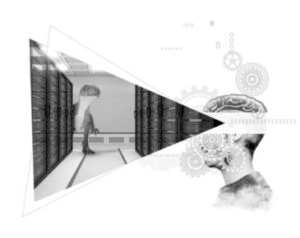But according to the new State of Database Report from SolarWinds, that responsibility has become a source of stress and exhaustion. More than one-third of DBAs are actively considering leaving their roles. The problem isn’t a lack of purpose—it’s pressure.
DBAs are navigating increasingly complex infrastructures, managing constant alerts, and firefighting problems day after day. Many simply don’t have the time, tools, or training to transition into more proactive, strategic work.
This year’s survey of over 1,000 IT professionals, including 518 DBAs and 503 IT executives, reveals a clear reality: the DBA role has evolved—but most organizations haven’t caught up.
Complexity Is Rising, but Capacity Isn’t
Modern DBAs manage more systems than ever before. They’re responsible for a growing mix of relational, NoSQL, in-memory, and even vector databases across on-premises, private cloud, and public cloud environments.
That complexity is stretching teams thin. Only 40% of DBAs say their monitoring tools are fully unified, while half of IT executives believe they already are. This perception gap shows that many leaders underestimate just how fragmented their database environments really are.
For DBAs, that fragmentation means jumping between dashboards, reconciling conflicting alerts, and trying to maintain uptime with incomplete visibility. The outcome? More downtime, slower response, and mounting frustration.
The Firefighting Trap: When Urgent Crowds Out Important
The report found that DBAs spend an average of 27 hours per week—more than half of their workweek—on reactive tasks like responding to tickets, restoring backups, and patching systems.
These are critical but repetitive tasks that keep DBAs in a constant cycle of firefighting, leaving little time for forward-looking work such as performance optimization, automation, or AI adoption.
Nearly 75% of DBAs report alert fatigue, and nearly half say it has a “great or severe” impact on their ability to prioritize and respond. Fatigue isn’t just a morale issue—it’s a business risk. It slows incident response, increases the chance of human error, and affects reliability.
Every hour DBAs spend firefighting is an hour they can’t spend optimizing systems, training on new tools, or driving innovation.
Executives and DBAs: A Disconnect That Drives Risk
One of the report’s most striking findings is the disconnect between executives and DBAs. Leaders often believe their teams have the resources they need—but those on the ground tell a different story.
For example, both groups agree that cloud costs and performance issues are key concerns. Yet DBAs are more likely to identify underlying causes like schema inefficiencies, replication lag, or outdated architectures—issues that often fly under the executive radar.
That disconnect doesn’t just create communication friction; it increases risk. When leadership underestimates the technical challenges teams face, performance and reliability suffer, and turnover rises.
DBAs are not just responders—they’re early warning systems. Ignoring their insights means paying for preventable problems later.
AI and Automation: Opportunity and Divide
Artificial intelligence (AI) and automation are transforming the database landscape—but not evenly.
Among surveyed DBAs:
- 65% use GenAI-assisted tuning or diagnostics
- 53% use GenAI for writing, coding, or research
- 44% are experimenting with machine learning models
- 66% use infrastructure-as-code tools like Terraform or Pulumi
However, maturity makes all the difference. DBAs working in fully unified environments report far greater success: faster diagnostics, more reliable automation, and more time for strategic projects. Those in siloed or partially unified setups spend more time firefighting and less time advancing AI initiatives. AI can’t fix broken workflows. Without unified visibility, quality data, and proper training, even advanced tools fall short of their promise.
Enablement: The Missing Ingredient in DBA Success
Even as technology advances, most DBAs receive minimal training.
- 38% get just one to two hours per month
- 31% receive one to five hours per quarter
- Only 29% have access to a full day or more of structured learning time each month
That lack of enablement directly impacts retention. DBAs who receive at least one full day of training per month are nine percentage points less likely to consider leaving their job.
In contrast, many DBAs are investing in their own growth—61% spend up to $1,000 of personal funds each year on professional development. This self-investment underscores both commitment and frustration.
From Firefighter to Architect: The Evolving DBA Role
Despite the daily challenges, DBAs are ready for change. They want to shift from maintenance mode to strategic leadership—driving performance, scaling infrastructure, and integrating AI into core operations.
When asked about future priorities, DBAs ranked these top goals:
- Leading automation and AI initiatives
- Driving scalability and performance optimization
- Taking part in architecture and design planning
They also recognize the growing importance of soft skills like communication, collaboration, and strategic thinking. These abilities help bridge the gap between technical complexity and business outcomes.
The challenge? Most organizations haven’t yet made space for DBAs to grow into these new, high-impact roles.
Three Steps to Build a Better DBA Future
The State of Database Report outlines a simple roadmap for organizations that want to empower their DBAs and protect against burnout:
- 1. Unify Monitoring and Visibility Consolidate monitoring tools into a single platform that provides holistic visibility into performance, dependencies, and uptime. Unified systems reduce alert fatigue and help teams act faster.
- 2. Invest in AI—and the Training to Use It AI and automation amplify DBA productivity, but only when teams know how to leverage them. Pair every AI initiative with structured enablement and time for hands-on learning.
- 3. Protect Time for Strategic Work Give DBAs breathing room to focus on architecture, optimization, and innovation. Success should be measured not by how many fires they put out—but by how few ignite in the first place.
The Bottom Line: Empowerment Beats Exhaustion
The 2025 State of Database Report reveals a critical truth: today’s DBAs are both indispensable and under strain.
Burnout, alert fatigue, and outdated tools are driving talent out of the profession—but the same forces that cause stress can also drive transformation. Organizations that invest in unification, AI readiness, and training aren’t just improving operations—they’re future-proofing their data foundations and retaining their most skilled technical talent.
The data is clear. The next move is yours.
Source: SolarWinds State of Database Report 2025
Survey of 1,080 database professionals conducted August–September 2025 across the U.S., U.K., Australia, Brazil, Canada, and other regions.




